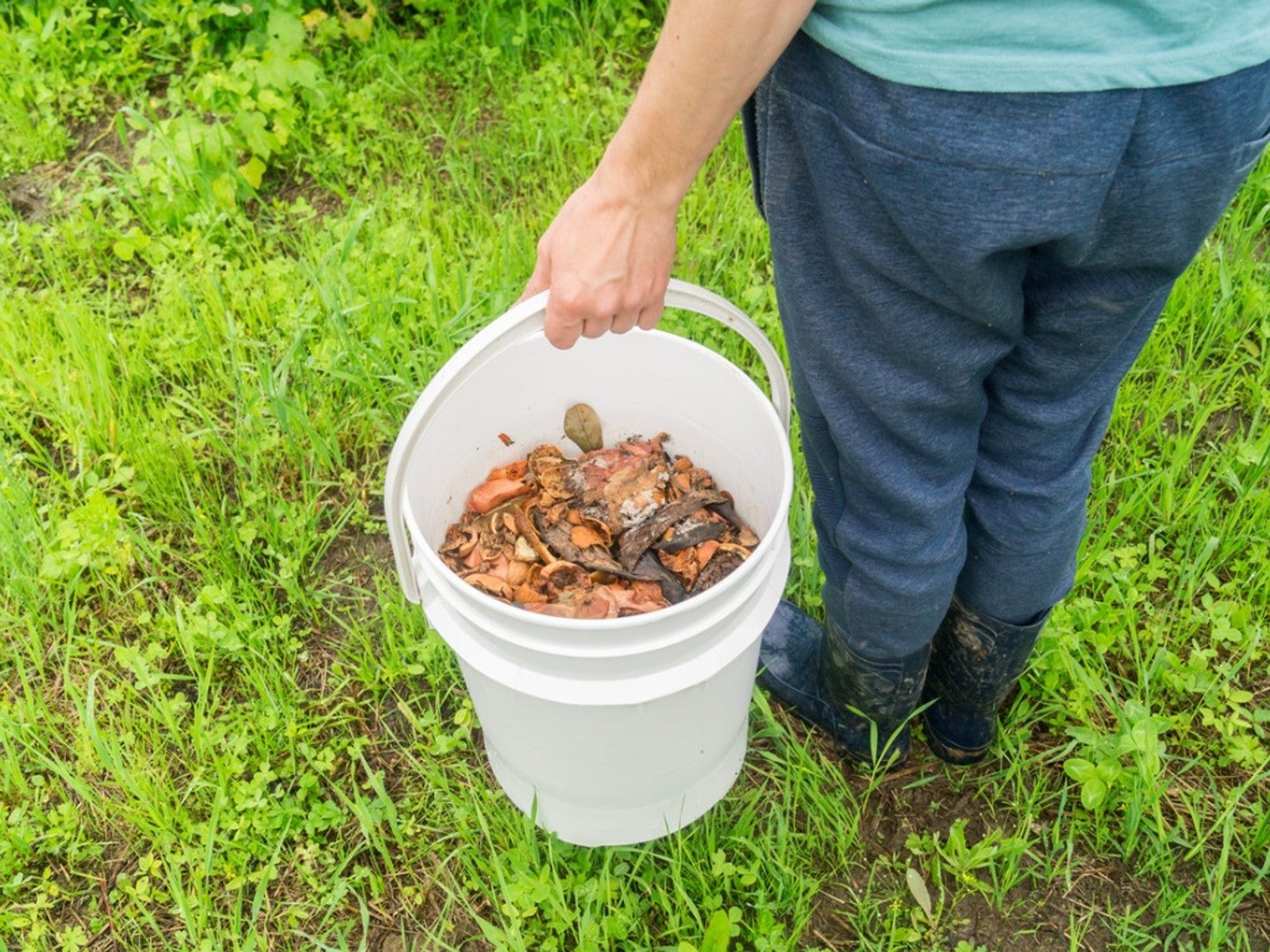How To Compost In A 5 Gallon Bucket


Is it possible to make compost in a bucket? Perhaps you've heard the minimum size for a backyard compost pile is a square yard (.8 sq. m.) and you've held off making this organic soil amendment due to space limitations. While this is true, there are two methods for decomposing kitchen scraps in a space as small as a five gallon bucket.
How to Make a Compost Bucket
The first method uses vermiculture, which is commonly referred to as worm farming. This term can be a bit misleading as it implies the purpose of vermiculture is to produce more worms. While that does happen, the main benefit of worm farming is to make vermicompost.
Vermicompost is worm castings or the bodily waste which worms produce when they consume kitchen scraps. A balance of brown and green components is needed to make vermicompost. Red wrigglers (Eisenia fetida) are the worms of choice for composting in a bucket and they are readily available from online retailers.
Gardeners can easily make their own vermiculture bucket composter with two 5 gallon buckets, a tight-fitting lid, and a drill. Start by drilling 10 to 15 holes in the bottom of one of the buckets. This facilitates drainage and keeps the composting materials from becoming too soggy.
Next, drill an additional 15 to 20 holes in the side of the same bucket in which you drilled the bottom holes. Then, drill 10 to 15 holes in the lid. Nest the drilled bucket inside the undrilled bucket to catch the drainage. This liquid can be poured out every few days and used to fertilize plants in the garden.
If desired, a piece of mesh fabric, window screen, or a coir disk can be placed in the bottom of the drilled bucket to prevent the drainage holes from clogging. Bedding materials (brown components) are placed on top of this screen and then layered with kitchen scraps. It's best to avoid garlic and onions as these have anti-bacterial properties.
Finally, add the worms and replace the lid. Gently turn or agitate the bucket every few days to add oxygen. You may wish to start a second system as it can take several months to make garden-ready compost.
Sign up for the Gardening Know How newsletter today and receive a free copy of our e-book "How to Grow Delicious Tomatoes".
Anaerobic 5-Gallon Bucket Compost
The second method is Bokashi composting. Developed in Japan by Dr. Teuro Higa, this method uses anaerobic decomposition to ferment kitchen scraps in a sealed bucket. This is the fastest method of composting, but it does produce a yeast or vinegar type odor.
In addition to vegetable and fruit scraps, this method can be used to decompose meat, bones, and dairy products. Maintaining a balanced carbon-nitrogen (greens and browns) ratio is not necessary, but specific microbes are needed for Bokashi composting. These are available on the internet.
Bokashi bucket composting requires an airtight system, so holes are only drilled in the bottom of the bucket. The drilled bucket is nested inside the undrilled bucket and the lid must fit tightly. A plate or circle of plastic can be placed on top of the organic material to prevent oxygen from permeating the fermentation zone.
A scoop of microbes are sprinkled on the mix each time kitchen scraps are added. Once the bucket is full, it should not be disturbed as this introduces oxygen. It takes about a week to complete the fermentation process. The fermented organic matter is then mixed with soil to finish the composting process.

Laura Miller has been gardening all her life. Holding a degree in Biology, Nutrition, and Agriculture, Laura's area of expertise is vegetables, herbs, and all things edible. She lives in Ohio.